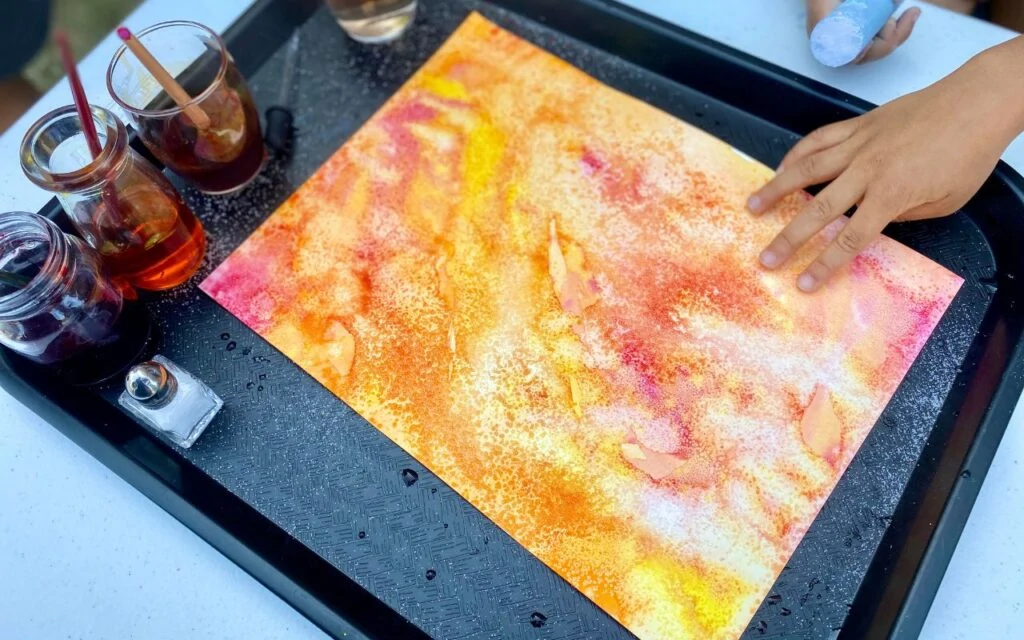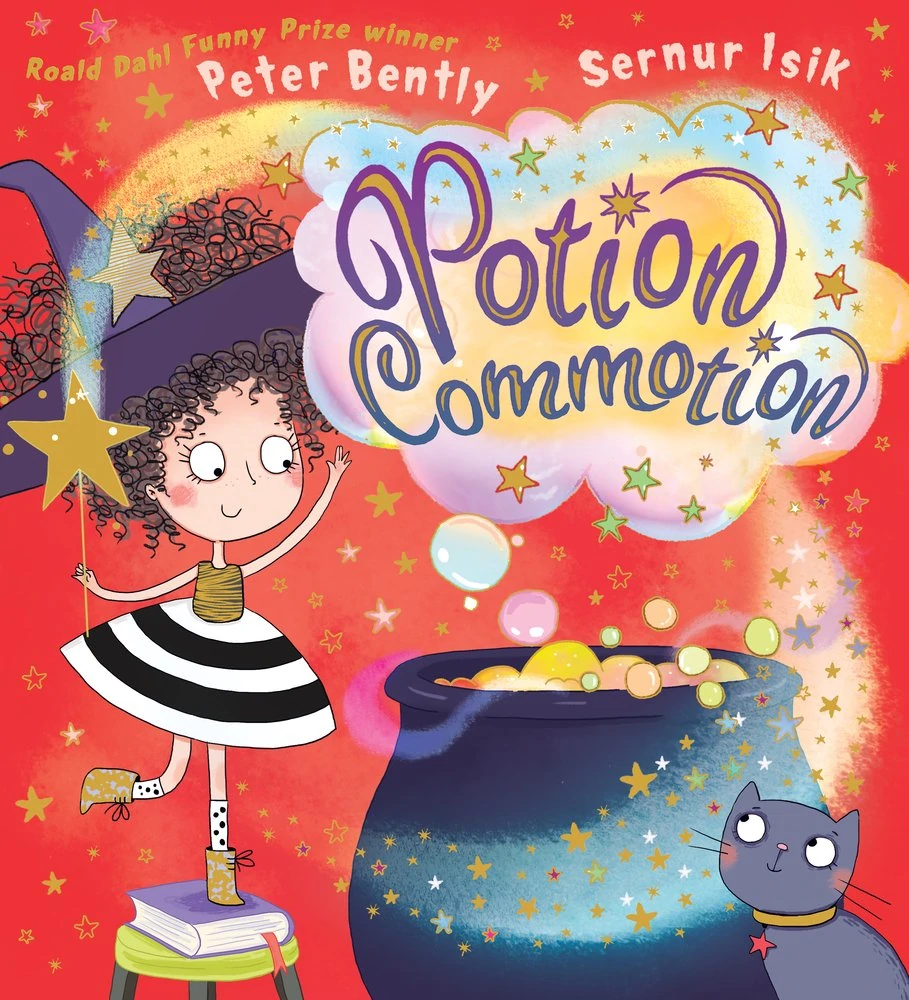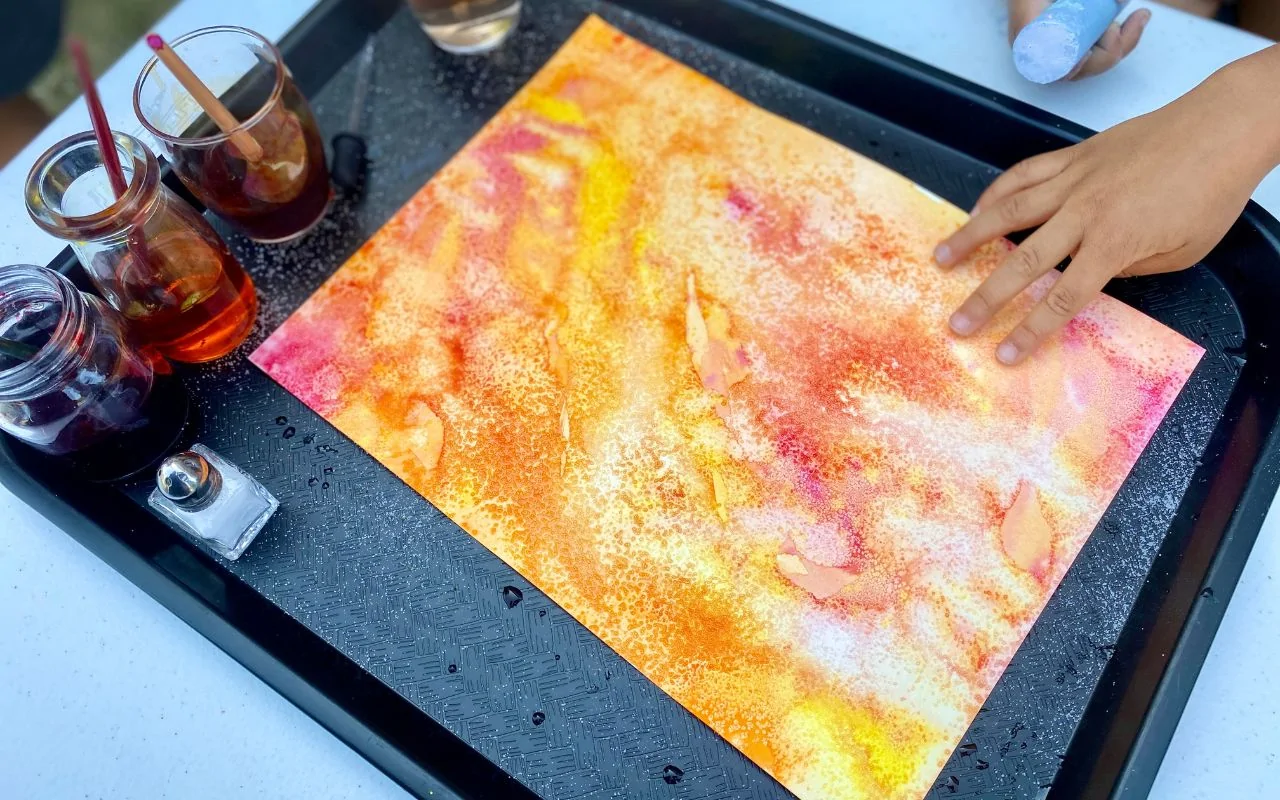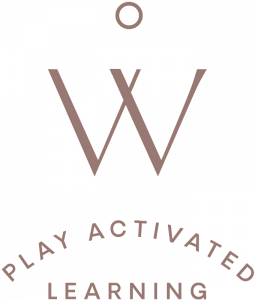This Play Invitation combines the wonders of science and art as children explore paint, salt, and water.
Salt is not only a common pantry staple but also a secret tool that can add a mesmerizing effect to chilren’s artworks. When sprinkled onto wet watercolor pigments, the salt absorbs the moisture and creates a unique crystalline texture that adds depth and interest to your painting.
While experimenting with these materials, children can observe the chemical reaction of absorption and contemplate the beauty of the final result.
This is also an opportunity to identify, describe and seek explanations for phenomena, and develop hand eye coordination and fine motor skills.
What Could Lead Us to This Play Invitation
- Children have been observing other simple chemical reactions – for example, when soap foams up while washing their hands;
- Children are excited about making magical potions and perfumes, or just mixing ingredients.
- Children have been painting landscapes, or adding background elements to their artworks.
Materials Needed
- Liquid watercolor paints
- Paper
- Pipettes
- Salt
- Brushes
- Trays (optional)
Setting up This Play Invitation
- Lay the paper on a table or on top of trays (a tray will help to contain the salt) with the watercolors, pipettes, and brushes within children’s reach.
- Have the salt nearby inside small salt shakers.
- Prepare a flat surface to dry the paintings horizontally.
Tip: Have a small broom and dustpan handy to collect the excess salt that spills onto the table and floor.
How to Create the Painting
- Invite children to paint the watercolor paper by squeezing the watercolor paint with pipettes and then brushing the paint around. Let children be generous with the paint (the paper must be wet for the salt to work).
- Offer the salt shakers and invite children to sprinkle the painting and observe the chemical reaction that occurs. (Once the salt is sprinkled, no more brushing.) Start with a small amount of salt and gradually add more if needed.
- The salt will absorb the moisture and create unique textures and patterns.
- Let It Dry: Allow the salt and the watercolor pigments to dry completely.
- Brush Off the Salt: Once the paint is dry, gently brush off the salt using a clean, dry brush. Be careful not to smudge or disturb the paint too much. The salt crystals may leave behind some residue, but that can add to the overall texture and visual interest of the artwork.
- Invite children to admire the beautiful textures and patterns created by the salt. They may be surprised by the unique effects that emerge and the depth it adds to their paintings.

Understanding the unique properties of salt in watercolor painting
Salt is a hygroscopic substance, meaning it can absorb moisture from its surroundings. When sprinkled onto wet watercolor pigments, the salt draws the moisture towards itself, causing the pigment to separate and create unique textures and patterns.
The size and shape of the salt crystals also play a role in the final result. Fine-grained salt will create more delicate textures, while larger crystals will produce bolder and more pronounced effects. Experimenting with different types of salt can lead to exciting discoveries and unexpected outcomes.
Creative Ways to Integrate Salt into Children’s Art Projects
1. Snowy Landscapes: Sprinkling salt onto wet watercolor pigments can create a beautiful snowy effect. The salt absorbs the moisture, leaving behind a textured, crystalline surface that resembles a winter wonderland.
2. Starry Night Skies: By using salt in combination with watercolor, children can create stunning starry night skies. The salt disperses the pigments, creating a galaxy of tiny dots and speckles that shimmer against the dark background.
3. Abstract Textures: Salt can also be used to add abstract textures and patterns to children’s artwork. Experiment with different salt sizes, densities, and application techniques to create unique and visually captivating compositions.
How to Nurture the Natural Unfolding of the Child’s Identity During This Play Invitation
- Young children have the right to raise questions about the phenomena that they observe and build their own theories about them. Let kids explore freely without imposing instructions or questions. Record what they do and what they say during the process. Later, you can bring your observations and the results of this exploration and reflect with the children about what happened, inviting them to share their theories.
The Academic Learning Opportunities
- LANGUAGE: Engage in the exploration of new vocabulary to communicate ideas.
- SCIENCE: Explore concepts such as absorption and salt’s reaction to water and pigment; and use observation and investigation to identify, describe, and seek explanations for phenomena, and to formulate new theories.
- ART: Develop perception of colors and hues, experiment with composition and visual balance.
Extensions
- Invite children to explore other unconventional materials for enhancing watercolor painting:
- Baking soda and vinegar: combine these two with watercolors to create another really fun chemical reaction.
- Rubbing Alcohol: Rubbing alcohol can be used to create striking textures and patterns in watercolor painting. Apply it to wet or dry pigments using a brush, spray bottle, or dropper, and watch the magic unfold.
- Plastic Wrap: Placing a piece of plastic wrap (without stretching it, just laying it down with its natural wrinkles) directly over wet watercolor and allowing it to dry creates a marbled effect. The plastic wrap prevents the paint from drying evenly, resulting in unique patterns and textures.
Book Recommendation

A funny book about the adventure of mixing ingredients.

